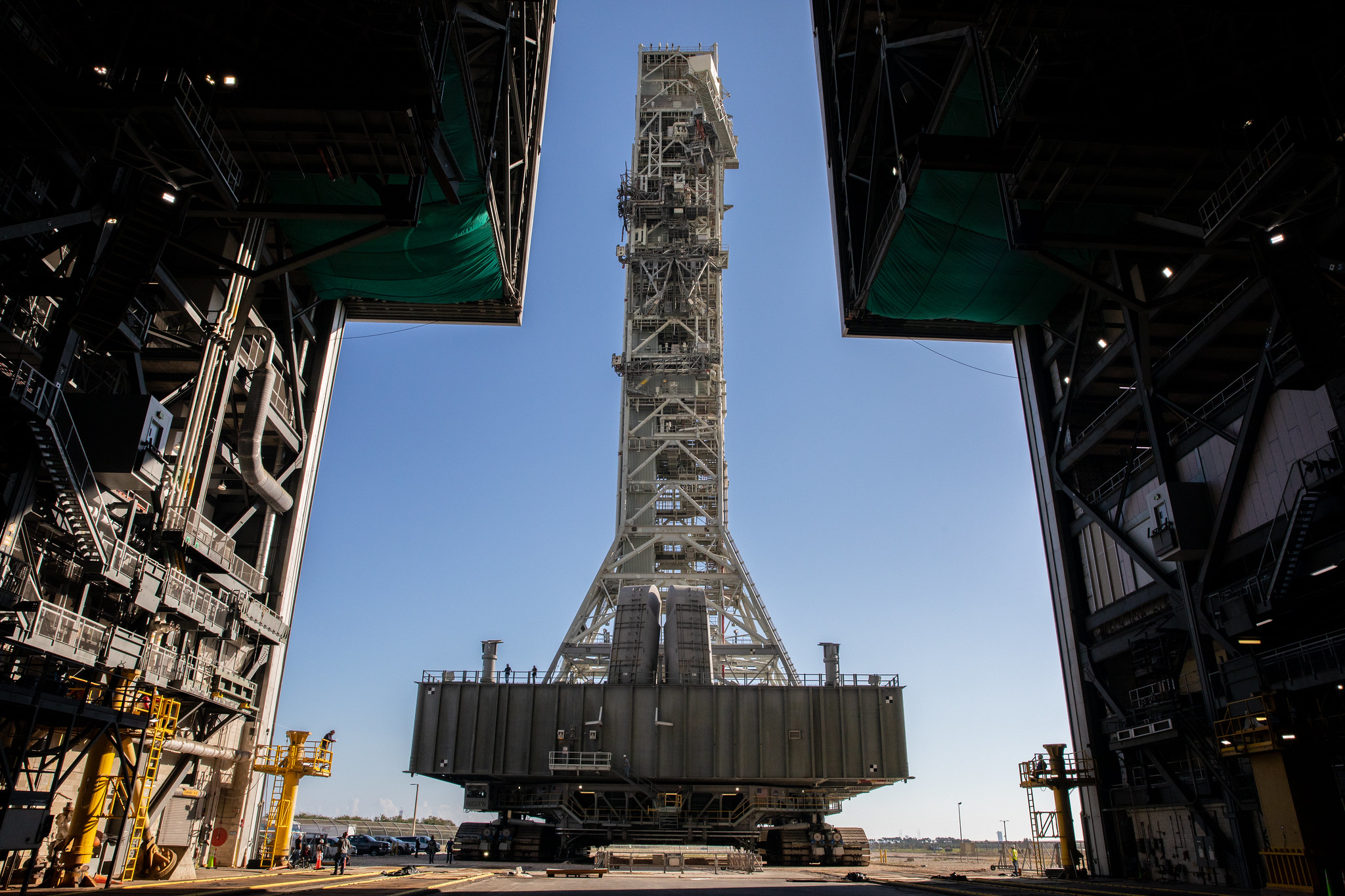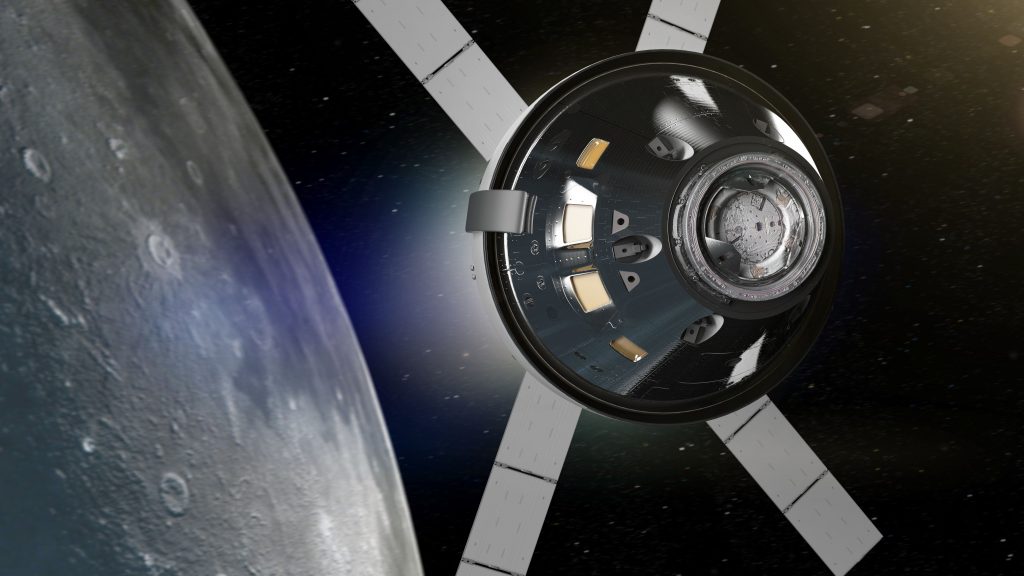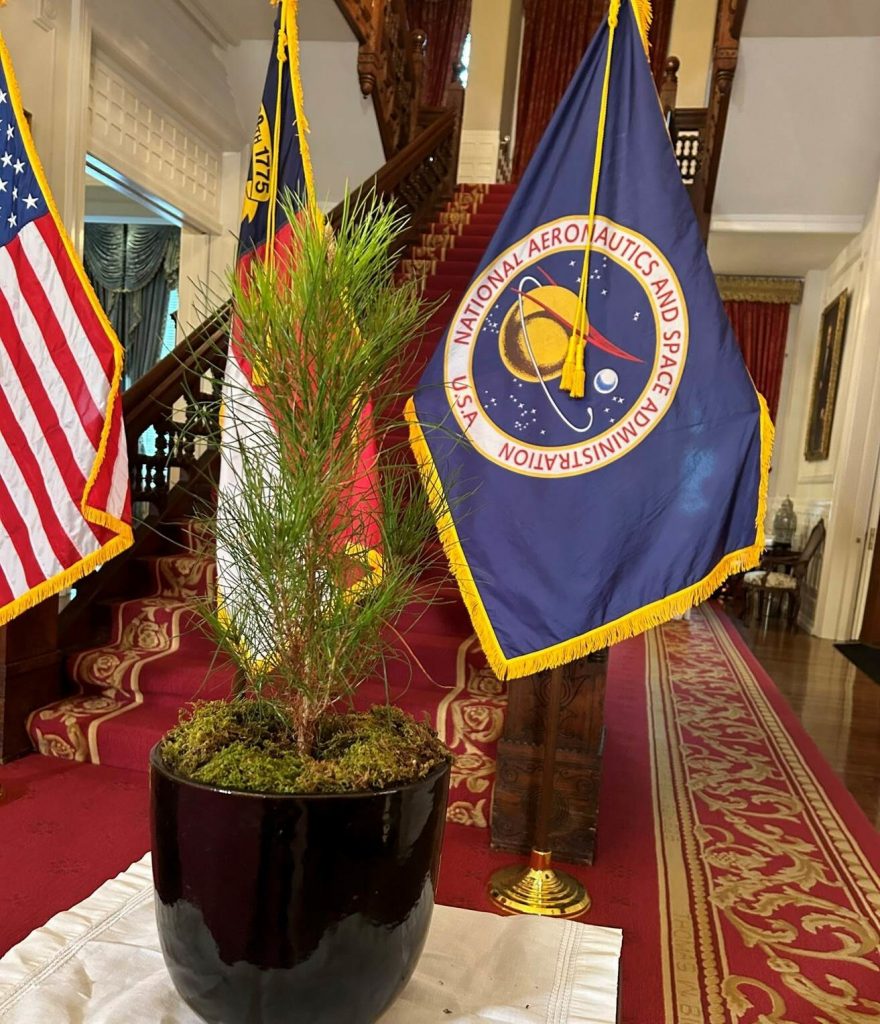The next Artemis mission will take four astronauts on a 10-day trip to flyby the Moon and confirm that all of Orion Spacecraft systems operate as designed with people aboard in deep space Missions to Mars.
“The unique Artemis II mission profile will build upon the uncrewed Artemis I flight test by demonstrating a broad range of SLS and Orion capabilities needed on deep space missions,” said Mike Sarafin, Artemis mission manager. “This mission will prove Orion’s critical life support systems are ready to sustain our astronauts on longer duration missions ahead and allow the crew to practice operations essential to the success of Artemis III.”
NASA’s Artemis II flight mission will send astronauts farther into the solar system than ever before. The Astronauts on their first flight on NASA’s Orion spacecraft to confirm systems work with crew aboard in deep space. It’ll pave the way for landing the first woman and next man on the Moon for long-term exploration and future missions to Mars.
Leaving Earth
The mission will launch the four astronaut crew from NASA’s Kennedy Space Center in Florida in 2023, and will return using a hybrid free return trajectory.

Their mission is to confirm that all of the spacecraft’s systems operate as designed with a crew aboard in the actual environment of deep space.
The initial launch is similar to Artemis I, as SLS lifts Orion into space, jettisons the boosters, service module panels, and launch abort system, before the core stage engines shut down and separates from the upper stage and the spacecraft.
Orion and the upper stage called the interim cryogenic propulsion stage (ICPS), will first orbit Earth twice to ensure systems are working correctly and safely, orbiting in the shape of an ellipse, at an altitude of about 1,800 miles and last about 90 minutes.
This will include the first firing of the ICPS to maintain the spacecraft’s path. After the first orbit, Orion will go into a high-Earth orbit. This manoeuvre enables Orion to build up enough speed to thrust towards the Moon.
The second, larger orbit will last approximately 42 hours with Orion moving in an ellipse between about 235 and 68,000 miles above Earth. For perspective, the International Space Station (ISS) flies an almost circular orbit of the Earth at around 250 miles above our planet.
Orion will separate from the ICPS after the burn to enter high-Earth orbit and use it as a target for a proximity operations demonstration before it is disposed of through Earth’s atmosphere. Mission controllers will watch as the astronauts manually pilot Orion, assessing its hardware and software. This will prepare for rendezvous, proximity operations, and docking on Artemis III.
Checking Critical Systems
The crew will turn control of Orion back to mission controllers and spend the orbit verifying system performance. They will remove their Orion Crew Survival suits and spend the mission in plain clothes, until suiting up again for reentry and recovery.
During this, the crew will test the performance of the life support systems during exercise and sleep periods to ensure readiness for the lunar flyby. This will include assessing suit and cabin modes and their effectiveness at generating breathable air and removing CO2 and water vapor.
Orion will also test communication and navigation systems ready for the trip to the Moon. It will fly beyond the range of GPS and Tracking and Data Relay Satellites to check Deep Space Network capabilities while still in the elliptical orbit around Earth. During the mission, the Deep Space Network will communicate with astronauts, send imagery and command the spacecraft.
Once Orion completes checkout procedures it will perform the next propulsion move, a translunar injection (TLI) burn, with its ICPS and service module providing the final push to set it on a four-day path around the Moon, stretching 230,000 miles. Once complete, Orion will return to Earth.
To the Moon and “Free” ride home
Astronauts will evaluate the spacecraft’s systems, demonstrating Earth departure/return operations, practising emergency procedures, and testing the radiation shelter.
The Artemis II crew will venture to a vantage point 4,600 miles beyond the far side of the Moon. From here, the astronauts in Orion will see the Moon close up and the Earth in the far distance, approximately a quarter-million miles away.
The mission should take about 10 days. To save fuel, the return trip uses Earth-Moon gravity to pull Orion on a trajectory back to Earth, taking four days.
Two missions, two different trajectories
Orion and a four-person crew will make history on Artemis III, launching to the Moon to be the first woman and man to walk its surface. NASA intends to launch crewed missions annually, focusing on establishing surface capabilities and constructing the Gateway in lunar orbit.
“Together, these test flights will demonstrate the capabilities we need to land the first woman and next man on the Moon by 2024 and enable sustainable missions for decades to come,” said Sarafin. “We will take the experience gained exploring the Moon to prepare for the next giant leap to Mars.”
NASA is leading a sustainable return to the Moon with commercial and international partners to enable human exploration of the solar system and bring back new opportunities. SLS, Orion, Gateway, and a modern human landing system are essential capabilities to enable complex human missions in deep space.
In preparation for the upcoming Artemis II mission, work has already begun on the launch facility and rocket assembly, with an announcement of the astronauts who will be flying the mission around the Moon expected soon.

Credits: NASA/Ben Smegelsky









[…] Next Artemis II mission to take four astronauts on a 10-day flyby of the Moon […]
[…] grasp atop NASA’s mega Moon rocket. After about two days, they will perform system checks on Orion, the spacecraft that will carry them, and conduct a targeting demonstration test relatively close […]